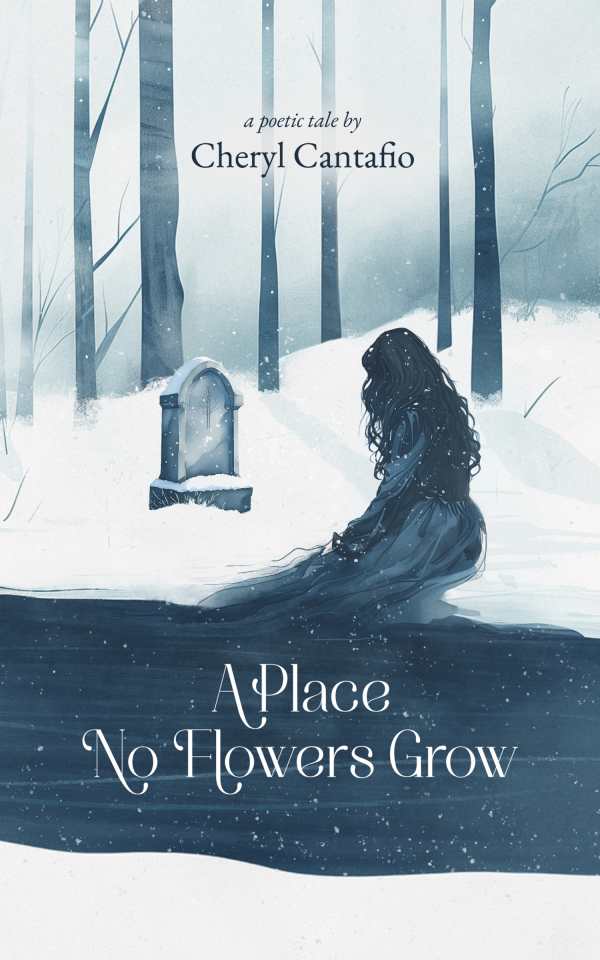A Place No Flowers Grow
A Place No Flowers Grow is a modern fairy tale in verse that’s shot through with menace.
A young couple in love has their happiness threatened by mistakes from their past in A Place No Flowers Grow, Cheryl Cantafio’s dark, fabulistic novella in verse.
Octavia, a medicinal botanist in training, and Roen, an intellectual who performs scientific experiments on animals, meet over a meal near their labs and fall fast in love. There’s a proposal; she plans to wear her mother’s wedding dress. As they look toward their future together, they mourn those whom they’ve lost.
The instrument of the couple’s undoing, though, waits among Roen’s experiments. They are watched by a fox whose happy frolicking was cut short by a trap. Fox grows more ferocious with each experiment. As Roen and Octavia make their wedding plans, Fox plots her escape—and revenge.
A modern fairy tale shot through with menace, the story is told via a mix of pantoum and cinquain entries. The latter are haunting and evocative, packing punches into their brief, impactful lines, as with an entry that both covers the couple’s coming together and foreshadows their inevitable end:
fox fires
revontulet
blues and greens and ambers
stars sprayed across the sky to light
their kiss
And as Octavia prepares for her wedding day, sparse lines evoke horror rather than joy:
lacy
ruby red and
delicate, she held the
lingerie against her skin and
shuddered.
The cinquain entries become more frequent as the book progresses, carrying the weight of the book’s gathering suspense. They are precise and involving.
By contrast, the pantoum entries, which carry the book’s first third and are plentiful after as well, assume a more labored, if intentionally folk tale-evocative, progression. Not all of their end rhymes feel natural, and their formality, while consistent with the book’s fairy-tale conceit, is at odds with the occasional inclusions of modern terms and sights, as with holy cow and a diner scene.
Indeed, the period is somewhat unclear prior to Octavia and Roen’s meet cute because of the pantoum form and complementary language. References to wildflowers and folk medicine and to Fox as a queen and huntress, and geographical vagueness, as with Roen’s “elsewhere” origins, evoke bygone days; these are at ultimate odds with the more modern setting. However, subtle variations between some entries’ opening and closing lines relieve this heaviness and uncertainty somewhat, acting as breadcrumbs toward next revelations. As the story moves toward its violent, twin conclusions, the forms are traded between with increasing frequency, holding attention and generating tension.
A tragic love story that doubles as a lesson against abusing animals, A Place No Flowers Grow is an eerie novella in verse.
Reviewed by
Michelle Anne Schingler
Disclosure: This article is not an endorsement, but a review. The publisher of this book provided free copies of the book and paid a small fee to have their book reviewed by a professional reviewer. Foreword Reviews and Clarion Reviews make no guarantee that the publisher will receive a positive review. Foreword Magazine, Inc. is disclosing this in accordance with the Federal Trade Commission’s 16 CFR, Part 255.

